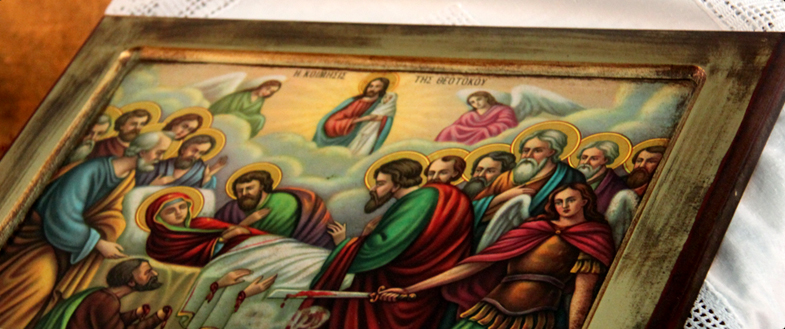
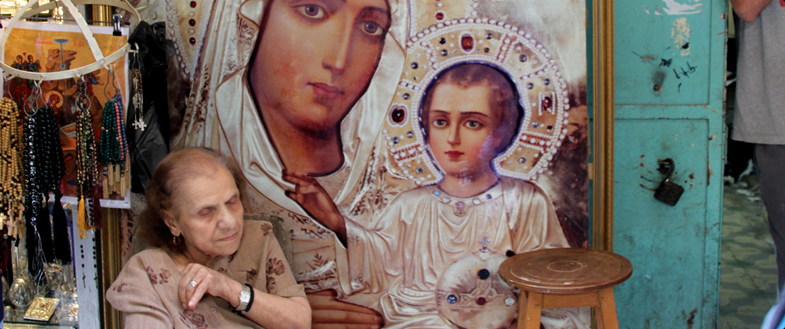
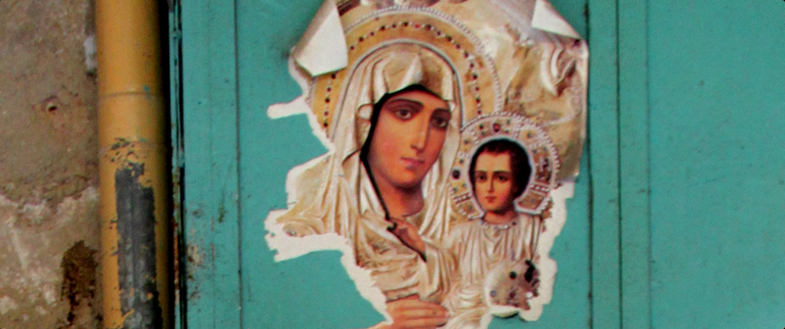
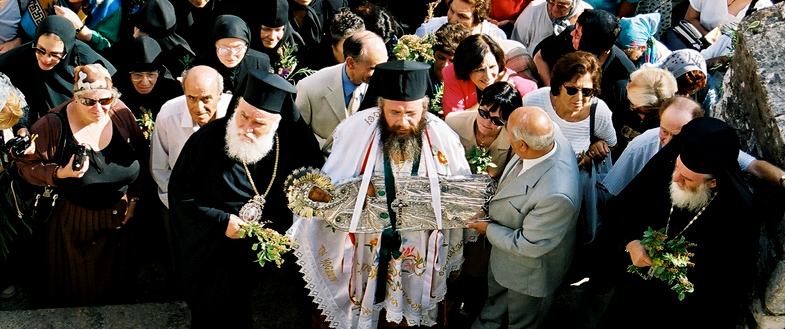
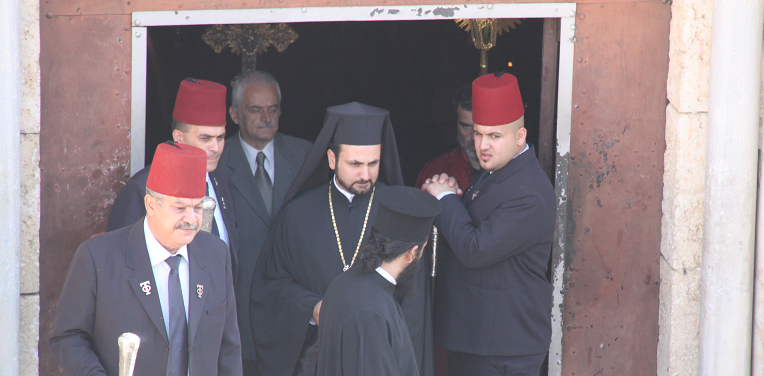




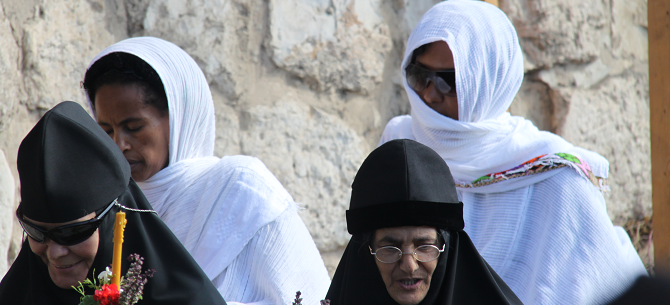
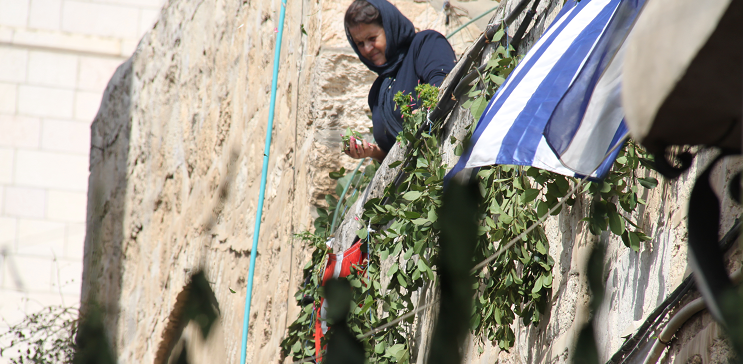


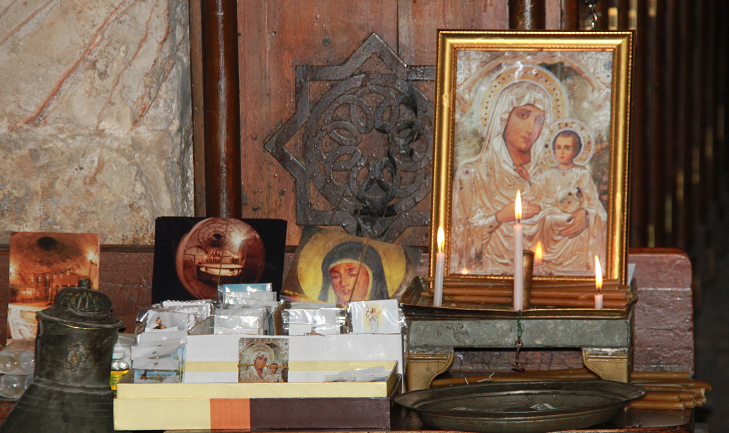
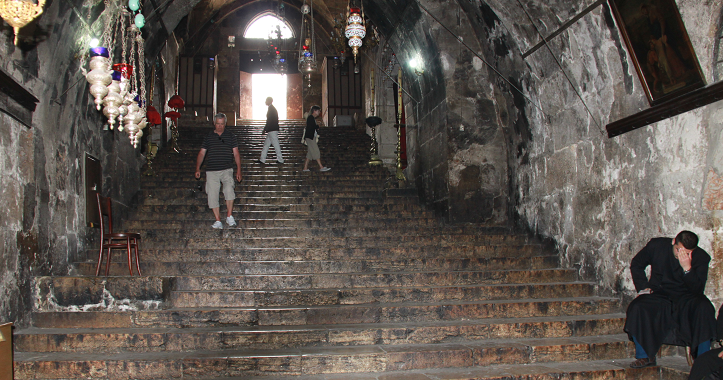

The Church of Mary is located in the Valley of Cedron. Built inside a subterranean cavern, Mary’s Tomb is a Crusader-period complex with Byzantine foundations. Its commemorative-style cruciform structure is intended to embody the Virgin’s death, resurrection, and ascent to heaven. Testimonies and writings from the Middle Ages bear witness to the sanctity of the cave’s entrance, which is hewn into the mountain. These same sources also indicate that the tomb has been a popular pilgrimage destination since the 6th century. A monumental Crusader-era staircase, leads down to the ancient crypt. As soon as visitors step inside the compound, they are indeed confronted with a monumental 47-step staircase, which dates back to the Crusader era. Upon descending to the main floor of the increasingly dim crypt, visitors find themselves before a five-foot high aedicule housing what is deemed to be Mary’s sepulcher. This small chapel also encases what are presumed to be some of the Madonna’s personal effects that were left behind in this grotto, such as her shrouds and cincture.
According to the Byzantine tradition, when the Virgin entered a state of dormancy, the Apostles escorted her body to this gravesite; soon after, the Theotokos ascended to heaven. The Dormition of the Theotokos Feast—the highpoint of the Marian calendar—is mentioned in several canonical texts, some of which are over 1,600 years old. Furthermore, liturgical accounts and archeological discoveries confirm the existence of a vivid Marian ceremony in and around Jerusalem from as early as the fourth century at the Church of Kathisma (Seat of the God-Bearer). The modern-day feast, which has been the emphasis of my fieldwork, also boasts an age-old rite. Consisting of utterances and customs that are diligently preserved by the ecclesiastical hosts this feast revolves around the Patriarchate’s funerary symbols and canonical theology.
Nurit Stadler
Read More http://www.tandfonline.com/doi/full/10.1080/0048721X.2011.602127#.Uyc19PmSzZI
The nub of this research consisted of observations, note taking, photographic and video documentation, informal discussions, and full-fledged interviews with pilgrims, visitors, and organizers in Hebrew, Arabic, English, French, and Russian. These activities were carried out by a research team that was comprised of students, and a medley of colleagues who accompanied us to various events. In addition, extensive textual research was conducted on the shrine. One of the central events that we explored is the Dormition Feast, which is held each year between August 25 and September 5. This celebration is indeed the largest event at the tomb of Mary, as thousands of local devotees and pilgrims from Orthodox countries the world over arrive to commemorate the latter stages of the Virgin’s temporal existence. Over the length of the study, I kept a detailed journal of the rituals that we observed and held discussions or chatted with a variety of participants: Palestinian Christians; lay and clerical pilgrims from abroad; several organizers from the host Patriarchate; and police officers who are responsible for securing the attendant processions. During one of the celebrations at the tomb on August 2011, we meet Luis, an Orthodox Christian from Bethlehem in his forties, who I accompanied to the tomb of Mary, lucidly articulated what many devotees consider the main motivation for visiting this site: “As Arab Christian minorities, we have a strong obligation to visit the grotto of our Mother, regularly, even in hard times, because if we do not venerate these places, eventually we will lose our historical claims to the land, to Jerusalem in particular… For the Orthodox, this is especially sacred territory and it belongs to us.” George opined that “we do not involve ourselves in the bloody struggle over land.” Instead, we resist by means of “our pious worship and devotion to the soil itself. We do this here at her grave.” Like many of my other informants, George fuses ritual with political-territorial claims.
Nurit Stadler
These videos are part of our fieldwork on various Orthodox and Catholic feasts and ceremonies—masses, processions, rosaries, and more—that are held throughout the year at Mary’s Tomb (since 2003).